|
Book HOTELS online
TRANSPORTATION
Book FERRY Tickets online
Book FLIGHTS online
BUS Service
Taxi Service
Rent a Car
|
Fodele is a very beautyful and traditional village, located just 3km from the beach (Fodele beach) and is distant only 10km from Agia Pelagia village. According to historians Fodele was once the site of the ancient town of Astali, the sea port of ancient Axos. Fodele is a rural village that is very charming and popular among local people and tourists on Crete. Take a walk to the surrounding areas just ouside the village to enjoy the beauty of the Cretan landscape and flora.
Fodele is built in a large area of orange, mandarine, lemon and olive groves famous for the optimal quality of all its agriculture products (especially the oranges/mandarines) and its an area particularly beautyful as a landscape. Fodele is a very green area. A very pretty park next to the main square of the village offers dense shade and several sites for walk and picnic. The small rivel that crosses the middle of the village has water running through even in early summer which is rare for most places on Crete. The locals in Fodele have developed remarkable activities in the handicraft sector and traditional Cretan pop art trade (like ceramics, handmade tablecloths). Significant is also the trade of local products, mainly oranges, mandarines, but also lots of vegetables.
Altitude of the village of Fodele: 54 meters |

| The whole area arround Fodele is lush and verdant.
In the center of the village (right after the huge platanos tree) there is a vast parking area. There are several traditional taverns that offer excellent food and shops with ceramics and handycrafts. Fodele is a very popular destination for the people in Heraklion city anf the surrounds, who use often to visit Fodele in the weekends particularly to enjoy a walk in the nature and the excellent local Cretan food offered in the area.
Take the short route to the top of the village as it offers wonderful views across the Fodele valley. |

Fodele - the beach of Fodele
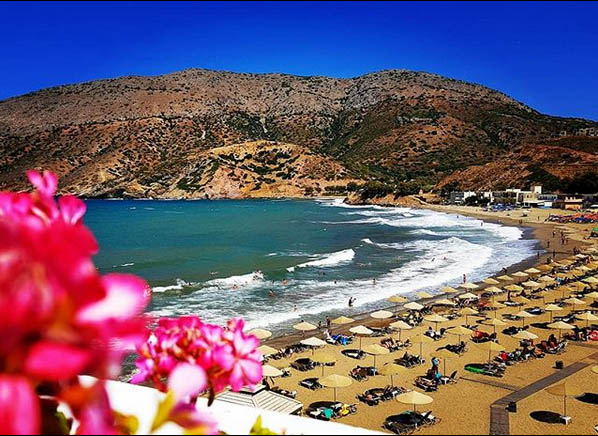
Fodele village - places to visit in Fodele area
Beside being a very interesting and attractive place on its own, Fodele is the birthplace of the famous painter Dominikos Theotokopoulos "El Greco" (1541–1614), "El Greco" means "the Greek" in Spanish. Do not miss to visit the El Greco museum in Fodele (open daily Monday to Sunday from 9am - 7pm), the old Byzantine church of Panagia (Annunciation of the Virgin Mary - its right opposite to the El Greco's museum) and the Holy Monastery of Agios (St.) Panteleimon (3,8km from Fodele village - about 10min drive. See directions further below...).
Dominikos Theotokopoulos "El Greco" (1541–1614) one of the few old master painters who enjoys widespread popularity - a "painter of the spirit", he was a painter who “felt the mystical inner construction of life". Read more about Dominikos Theotokopoulos on the page for El Greco at the Metropolitan Art Museum of New York (METmuseum.org - Met’s Heilbrunn Timeline of Art History)
"El Greco" - his biography (wikipedia)
"El Greco" - view all of his paintings here, (or at WikiArt)
Dominikos Theotokopoulos "El Greco" museum (about 850 mt from the center of Fodele village)
The Museum (and a cafe outside) is open to the public during summer months (20th May to mid October, daily weekend included), from 9am to 7pm. Entrance cost is two Euros. |

Byzantine church of Panagia in Fodele (about 850 mt from the center of Fodele village)
Next to the museum of Dominikos Theotokopoulos (El Greco) in Fodele is the 14th century Byzantine church of Panagia (Holy Mother), its a beautyful church with unique murals. Was built on the site (central and eastern part) of an early Christian basilica, an older church of the 8th century (a basilica with three aisles - only a few architectural traces of this previous church exist). Its a four-pillared domed church (Greek School), the church is located on the north west of Fodele and is at a walking distance (850m, you may also drive there by car).
Its' interior is decorated with beautiful frescoes in three/four layers. The oldest layer is an artistically significant example of church frescoes from this period on the island of Crete.
Byzantine churches were typically built in a cruciform style. The two axis of the cross are higher than the rest of the church which has a rectangular perimeter. A dome with windows is on top of the church and the windows around the church are decorated with bricks and arches. The church contains many remains of frescoes in addition to a marble relief from the earlier church representing a wild animal and two wild goats.
Photography inside the Byzantine church is not allowed
Opening times: like the Dominikos Theotokopoulos (El Greco) museum, the Byzantine church is open to the public during summer months (20th May to mid October, daily, including weekends), from 9am to 7pm.
Entrance in the Byzantine church of Panagia is free of charge. |


Holy Monastery of Agios (Saint) Panteleimon (near to FODELE, 3,8km, a 9 minutes drive by car)
Visiting the Holy Monastery of Agios Panteleimon will definitively reward you if you are a lover of nature as driving among the olive, orange and mandarine groves right after Fodele towards the inland and after just 3,8km will bring you to the mediaval monastery of Agios Panteleimon. The road is very pleasant, it follows the river bed and the monastery itself, build in a hidden, beatyful spot surrounded by vast vegetation, is very relaxing and charming with a nice architecture. It was built in the last period of the Venetian occupation of Crete, with a fortress architecture. Was founded during the 16th centure when the monks of the seaside monastery of Agios Antonios (St. Antonios in Pera Galini) were often attacked by pirates and decided to moved towards the mainland that offered more protection (though there are other testimonies that the monastery of Agios Panteleimon was already pre-existing there). During the Ottoman Turkish occupation the monastery served as a centre of the revolutionary actions and was severely damaged and pillaged by the Ottomans in retaliation, who looted and destroyed the monastery several times.
The Katholikon (central part), the place where monks gather during the service, is a double section temple, basilica shaped. The north aisle is dedicated to Agios Antonios while its south (and oldest) to Agios Panteleimon. Consists of two vaulted rooms connected with two openings, a large one in the center of the temple and a smaller in the sanctuary. It has a marvelous woodcut iconostasis (we can see only the upper part).
Among the most important sacred relics is part of the hand of Agios Panteleimon and four icons from 17th century, works of Michael Damaskinos (the Second Coming, the dance of the Saints, Saint Onoufrios, Saint Gerasimos) and also "Archangel Michael", works of the famous Cretan school of icon painting.
NB: respect the environment and holyness of the area, and please don't wear beach clothes and/or clothes that leave big part of the skin unexposed while visiting monasteries.
(If you like walking, its higly reccommended to take a long walk from Fodele village to Agios Panteleimon monastery, its just 3,8km from Fodele village and the scenery is just amazing. See directions further below...). |
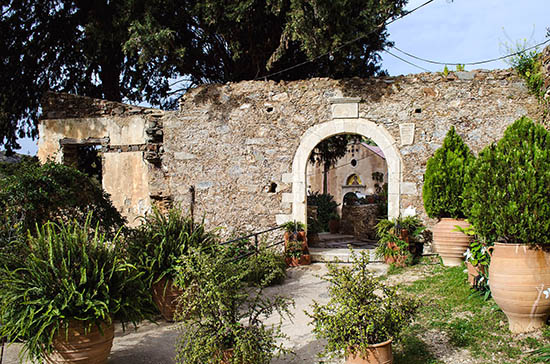
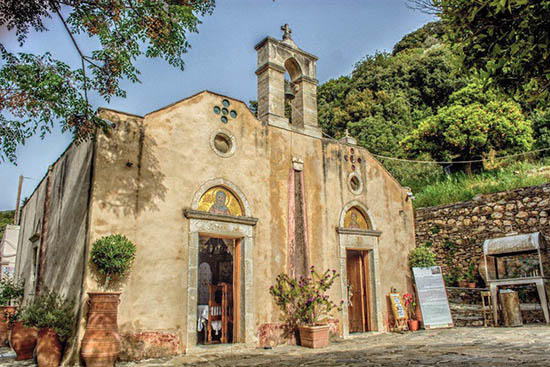
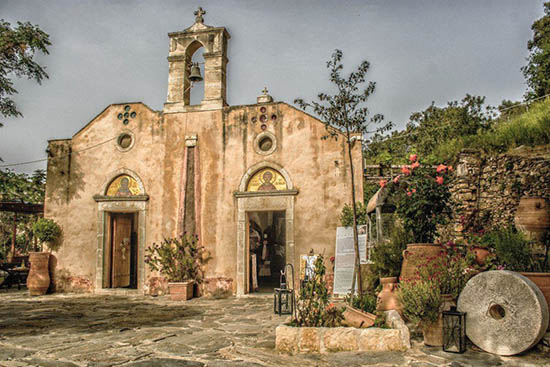
Fodele village - maps and directions
Get directions - how to drive to Fodele village from Agia Pelagia

Get directions - how to walk/drive from Fodele village to El Greco museum
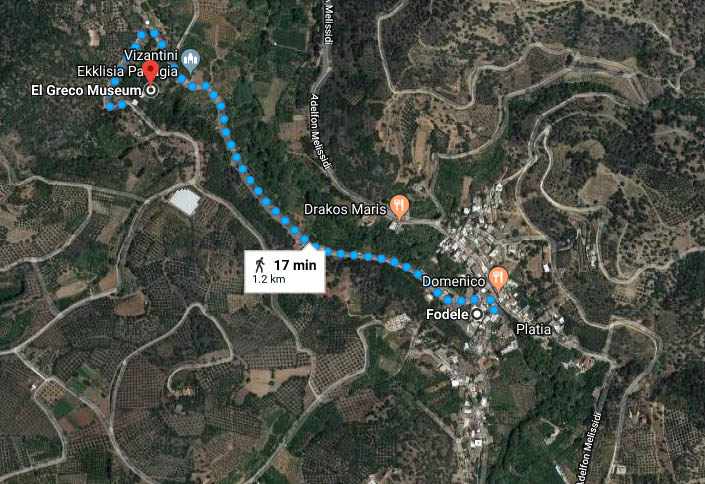
Get directions - how to walk/drive from Fodele village to the Byzantin church of Panagia
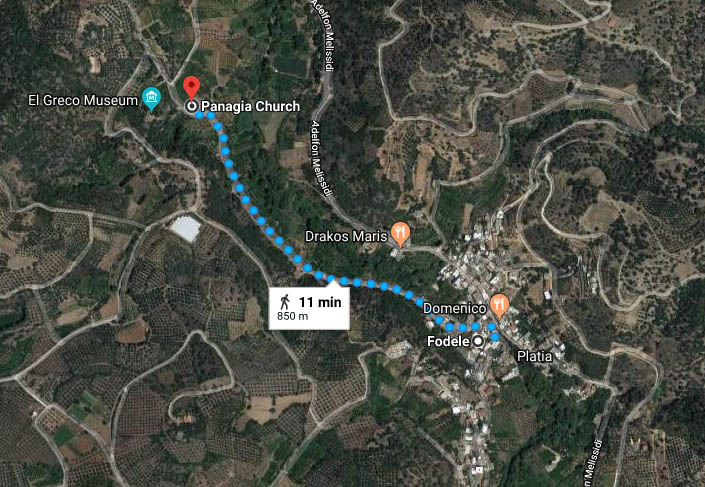
Get directions - how to drive from Fodele village to Holy Monastery Agios Panteleimon
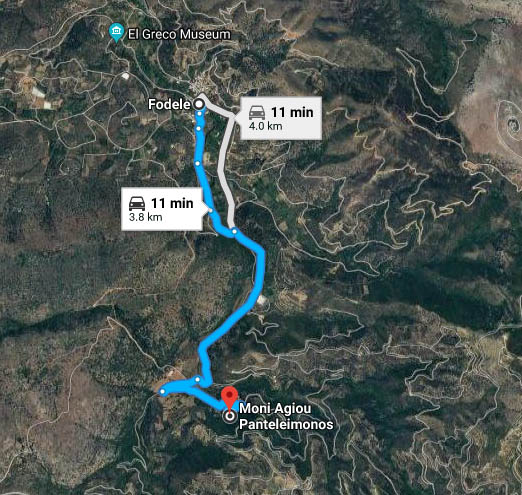
Book car rentals in Fodele Beach
Holiday Hotel offers in Fodele Beach Resort
Booking.com
-------------------------------------------------------------------------------------------------------------------

Book cheap Car Rental offers in Fodele village and Fodele Beach online - Fodele Car Rental bookings
|
|